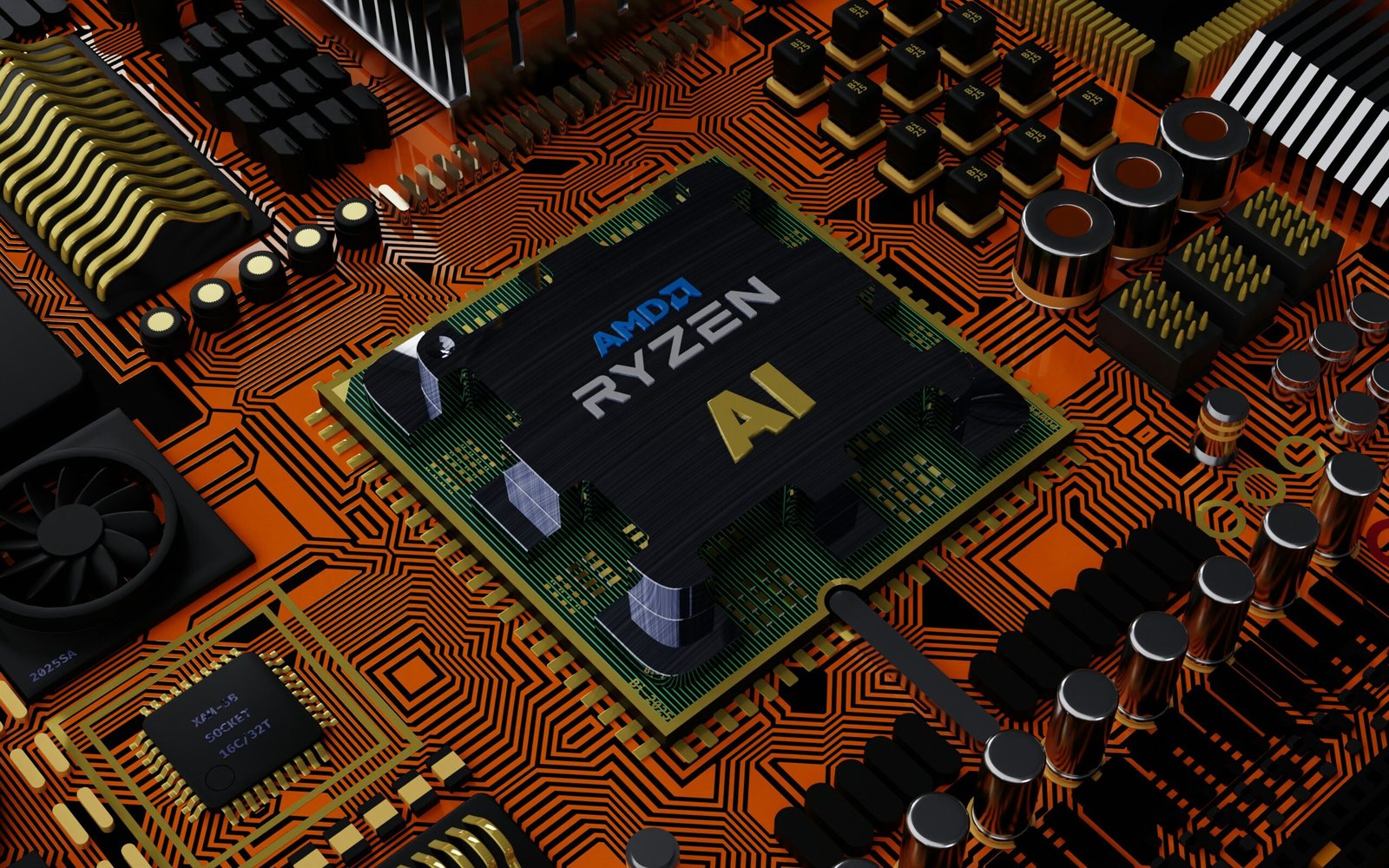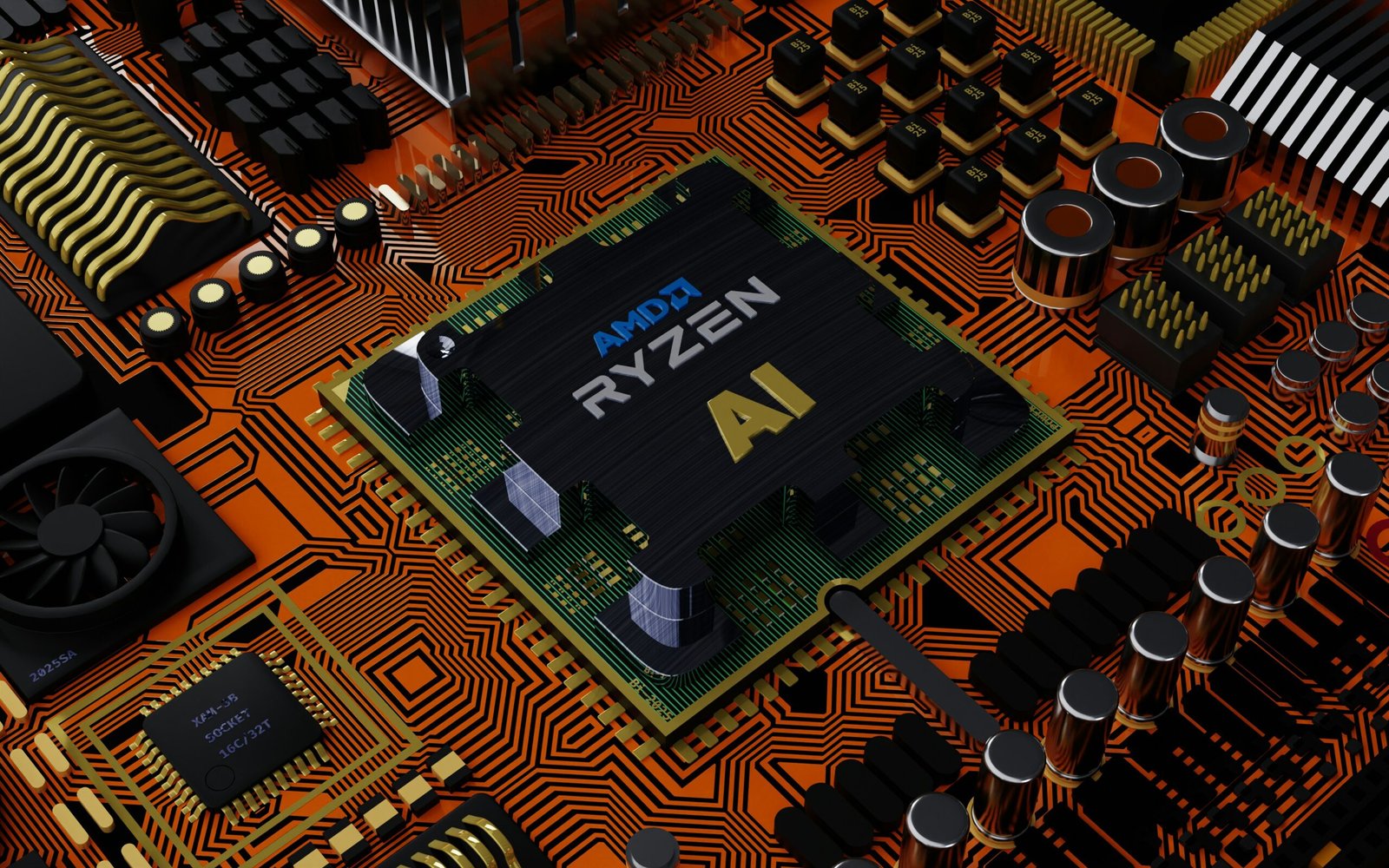Unlocking the Benefits of Edge Computing: A Complete Guide for 2024
 Photo by BoliviaInteligente on Unsplash
Photo by BoliviaInteligente on Unsplash Introduction to Edge Computing
Edge computing represents a paradigm shift in how data processing and computational tasks are managed and executed. Unlike traditional centralized computing models, where data is sent to a central server for processing, edge computing brings computation closer to the data source. This proximity to data sources reduces latency significantly, enhancing real-time data processing capabilities.
Latency, the delay before data begins to transfer following an instruction for its transfer, is a critical factor in modern applications. By processing data at the edge—near the devices that generate or collect it—edge computing minimizes latency and ensures faster response times. This is particularly useful in applications that require immediate feedback, such as autonomous vehicles, industrial automation, and smart city infrastructure.
The decentralization of processing workloads enables the efficient handling of massive data volumes generated by the Internet of Things (IoT) devices. Instead of overwhelming central servers, edge nodes take on the initial processing tasks. This decentralization not only improves performance but also enhances security by reducing the risk of data breaches and enabling localized data management.
Edge computing’s importance in modern technology infrastructures cannot be understated. It allows enterprises to optimize their operations by making faster, data-driven decisions. For instance, in healthcare, edge computing can enable near-instantaneous analysis of patient data, leading to more timely and accurate diagnoses.
Moreover, by distributing computing resources closer to where data is generated, edge computing alleviates the bandwidth burden on networks, thereby reducing costs and improving overall network efficiency. This approach aligns well with the rising demand for real-time data processing and connectivity, which are crucial for the development and deployment of advanced technologies like artificial intelligence and machine learning.
In summary, edge computing is a transformative technology that reshapes how data is processed, stored, and utilized, offering significant advantages over traditional centralized computing models by addressing issues like latency, bandwidth, and security.
The Evolution of Edge Computing
Edge computing has emerged as a transformative force within the tech industry, evolving significantly since its inception. Initially conceptualized to address the limitations of traditional cloud computing, edge computing has become essential in enabling faster data processing and reducing latency. The journey of edge computing began with early efforts to optimize network efficiency, taking place at the periphery of centralized data centers. Its evolution has been marked by several pivotal milestones and technological advancements that have refined and expanded its application.
The first significant milestone in the evolution of edge computing was the advent of Content Delivery Networks (CDNs) in the late 1990s. CDNs aimed to boost web performance by caching content closer to the end-users, effectively reducing load times and server strain. This concept laid the groundwork for further developments in decentralizing data processing. As Internet of Things (IoT) devices proliferated in the early 2010s, the need for processing data at the ‘edge’ — near the source of data generation — became apparent, propelling edge computing into mainstream adoption.
In the 2010s, the rise of 5G technology marked another transformative stage for edge computing. The ultra-low latency and high-bandwidth capabilities of 5G networks facilitated real-time data processing and analytics, crucial for applications requiring immediate responses such as autonomous vehicles, smart cities, and augmented reality. Additionally, advancements in microprocessors and storage solutions have further enhanced the capabilities of edge devices, enabling them to handle more complex computations independently of centralized cloud infrastructures.
By 2024, edge computing has reached new heights with emerging trends shaping its landscape. Decentralized edge ecosystems, increased adoption of AI at the edge, and edge-first strategies for enterprises signify its ongoing growth. Enhanced security features tailored for edge deployments and regulatory compliance for data sovereignty are also critical components driving its future development. Consequently, edge computing’s evolution continues to be instrumental in redefining how data is managed and utilized across various industries.
Key Benefits of Edge Computing
Edge computing represents a paradigm shift in how data is processed, enhancing various aspects of functionality for businesses and consumers alike. One of the primary benefits is improved performance through reduced latency. By processing data closer to its source, edge computing minimizes the delay that occurs when data is transmitted to and from centralized cloud servers. For instance, self-driving cars require real-time data processing to function safely. With edge computing, these vehicles can make instantaneous decisions by processing data locally, ensuring quicker response times and enhanced safety.
Enhanced data security and privacy are also significant advantages. Edge computing allows sensitive data to be processed locally rather than being transferred to a central data center, reducing the risk of interception or misuse. A healthcare organization, for instance, can leverage edge computing to process patient data on local devices, ensuring privacy and compliance with stringent data protection regulations.
Efficient bandwidth usage is another critical benefit. By processing data at the edge, only relevant information needs to be sent to centralized servers, which can significantly reduce bandwidth consumption. Retailers, for example, can use edge computing to analyze customer behavior patterns in-store and only transmit summary data to the cloud, optimizing network resources and reducing costs.
Moreover, edge computing offers greater reliability through localized data processing. In scenarios where connectivity to central servers might be unreliable or intermittent, having the capability to process data locally ensures continuous operation. For instance, oil rigs operating in remote locations can utilize edge devices to monitor equipment and process sensor data locally, maintaining operational efficiency even with limited connectivity.
These examples illustrate just a few of the multifaceted benefits edge computing brings to various sectors. Whether it’s reducing latency, enhancing security, conserving bandwidth, or ensuring operational reliability, the advantages make it a compelling choice for businesses aiming to optimize their data processing capabilities in 2024 and beyond.
Challenges and Limitations
Despite the many advantages that edge computing offers, organizations must navigate a host of challenges and limitations to reap its full benefits. One of the primary hurdles includes the substantial infrastructure costs involved. The need for distributed data centers, server nodes, and other hardware can be financially daunting. These costs are particularly significant for small to medium-sized enterprises that may lack the capital required for comprehensive edge computing deployments.
Moreover, the complexity of implementation poses a significant obstacle. Edge computing environments necessitate sophisticated architecture involving both hardware and software. The distributed nature of edge networks involves intricate processes to ensure seamless integration and efficient operation. Therefore, organizations often require skilled personnel to manage the decentralized data systems, which adds another layer of complexity and cost to the undertaking.
Security concerns also contribute to the constraints associated with edge computing. With data being processed closer to its source, the potential for security breaches increases. The decentralized nature means multiple entry points for threats, making it challenging to secure all nodes adequately. Additionally, the lack of standard security protocols and regulatory frameworks can complicate the safeguarding of sensitive information, posing significant risks to organizational data integrity.
Interoperability issues further complicate the deployment of edge computing solutions. Different vendors and platforms often have varied protocols and standards, leading to compatibility challenges. This lack of standardization can hinder the seamless integration of new technologies, making it difficult for organizations to fully leverage their existing infrastructure. Consequently, these interoperability issues demand comprehensive strategies to ensure cohesive operation across diverse systems.
To mitigate these challenges, organizations can adopt a structured approach. Conducting a thorough cost-benefit analysis can help in planning feasible investments in edge infrastructure. Investing in robust security measures and adopting standardized protocols can significantly enhance data protection and interoperability. Additionally, training and hiring skilled personnel can address both the complexity and security challenges effectively, thereby paving the way for the successful adoption of edge computing.
Edge Computing Use Cases and Applications
Edge computing represents a significant technological evolution, offering enhanced capabilities across multiple industries by bringing computation and data storage closer to the sources of data. Its implementation spans from healthcare to automotive, retail, and manufacturing, each sector benefiting uniquely from this technology.
In the healthcare sector, edge computing is pivotal. For example, in remote patient monitoring, edge devices can process data locally, enabling real-time analytics and timely interventions. Wearable health devices, which continuously record vital metrics, leverage edge technology to provide instantaneous feedback, enhancing patient care while reducing the burden on central servers.
The automotive industry is another primary beneficiary. Autonomous vehicles rely on edge computing to process vast amounts of data from various sensors and cameras in real-time. This local processing is crucial for making immediate driving decisions, ensuring safety and efficiency on the roads. Additionally, edge computing supports vehicle-to-everything (V2X) communication, enhancing connectivity and coordination between vehicles and infrastructure.
In the retail sector, edge computing facilitates smart retail solutions. For instance, in-store analytics are vastly improved with edge technologies, offering real-time insights into customer behavior and inventory levels. Smart shelves and checkout-free shopping experiences are becoming a reality, driven by edge computing’s ability to swiftly process sensor and camera data at the store level.
Manufacturing is being transformed by edge-enabled Industrial Internet of Things (IIoT). Factories can harness edge computing to monitor equipment health and predict failures before they occur. By processing sensor data on-site, manufacturers can achieve lower latency and higher efficiency in their operations, reducing downtime and maintenance costs significantly.
Smart cities, too, are adopting edge computing to enhance urban living. From intelligent traffic management systems to energy-efficient utilities and public safety applications, edge computing supports real-time decision-making and responsive city services. By processing data locally, cities can react more swiftly to dynamic conditions, improving overall urban management.
Edge computing’s potential extends further into real-time analytics across various domains. Businesses can quickly analyze data at its source, gaining actionable insights with minimal latency. This capability is particularly useful for applications requiring immediate response, such as fraud detection, cybersecurity, and live event monitoring.
Edge computing is evidently a transformative force across multiple industries. Its ability to process data locally not only enhances efficiency and responsiveness but also opens new pathways for innovation and improved customer experiences.
Edge Computing Technologies
Edge computing represents a significant shift in how data processing and analysis occur, particularly through its decentralized approach. The cornerstone of this model is edge devices, which are often IoT (Internet of Things) devices embedded with sensors and actuators designed to gather and process data locally. These devices range from simple sensors to complex, multifunctional equipment capable of handling computational tasks previously reserved for centralized data centers.
Edge servers play a crucial role in this ecosystem, acting as local data hubs that aggregate and further process data from various edge devices before sending critical insights or filtered information to the cloud. These servers are equipped with robust processing capabilities and storage, designed to handle real-time analytics and event processing with minimum latency.
The symbiotic relationship between hardware and software platforms in edge computing cannot be overstated. Software platforms tailored for edge environments include edge orchestration tools, which coordinate the efficient operation and communication of edge devices, data processing applications, and edge analytics tools. These platforms often leverage containerization and microservices architecture to ensure scalability and flexibility.
Emerging technologies are continually bolstering the capacities and applications of edge computing. The advent of 5G networks, with their unparalleled speed and low latency, has proven to be a game-changer, enabling more robust and real-time applications. Additionally, the infusion of artificial intelligence at the edge empowers devices to execute predictive analytics and machine learning tasks on-site, thus reducing the dependency on cloud-based AI models.
Edge orchestration tools have also evolved, offering sophisticated solutions to manage resources dynamically. These tools ensure that workloads are balanced and that the integrity of data is maintained across sprawling, decentralized networks. Collectively, technologies like 5G, AI at the edge, and advanced orchestration tools are driving unprecedented innovation in the edge computing arena, making it ever more pivotal in the digital landscape of 2024.
Future Trends and Predictions
As we move forward into 2024 and beyond, the landscape of edge computing is poised to undergo significant transformations. One of the primary trends to watch is the integration of artificial intelligence (AI) and machine learning (ML) at the edge. As these technologies become more advanced, deploying AI and ML models directly at the edge will enable faster, real-time decision-making processes, reducing latency and bandwidth usage. This will be particularly critical for applications requiring instantaneous responses, such as autonomous vehicles and industrial automation.
Moreover, the application of quantum computing to edge computing is another exciting development on the horizon. Quantum computing promises to enhance computational capabilities far beyond current limitations, paving the way for more efficient data processing and complex problem-solving. When combined with edge computing, quantum algorithms could significantly optimize resource allocation and data management, facilitating even greater efficiencies and pushing the boundaries of what edge devices can achieve.
In terms of new use cases, we can expect to see edge computing playing a vital role in the proliferation of smart cities. The deployment of connected infrastructure, from traffic management systems to public safety networks, will leverage edge computing to process data locally, ensuring rapid and reliable services. Healthcare is another sector ripe for innovation; edge computing will enable real-time patient monitoring and faster diagnostics, enhancing care delivery and patient outcomes.
Furthermore, the evolving landscape of edge computing will be characterized by increasing decentralization. As businesses and industries adopt edge solutions, the emphasis will shift towards localized data handling to protect privacy and reduce downtime. The trend towards more robust edge-to-cloud integration will also continue, as seamless interoperability becomes a cornerstone of efficient data ecosystems.
In conclusion, the future of edge computing is brimming with potential. With advancements in AI, quantum computing, and burgeoning new use cases, edge computing is set to redefine how data is processed and utilized across various spheres, making it an indispensable component of the digital infrastructure.
Conclusion and Strategic Considerations
Edge computing has emerged as a critical technology, offering numerous benefits for businesses seeking to optimize performance, scalability, and responsiveness. By processing data closer to its source, edge computing significantly reduces latency and bandwidth usage, leading to faster decision-making and improved user experiences. This guide has elucidated the various advantages of edge computing, such as enhanced data security and privacy, cost-efficiency, and support for IoT and AI applications.
For organizations considering the adoption of edge computing, several strategic steps can facilitate a successful implementation. Firstly, it is essential to conduct a thorough assessment of existing infrastructure and identify specific use cases where edge computing can add the most value. Creating a comprehensive roadmap, which includes phased deployment and integration with cloud services, helps ensure a seamless transition.
Adopting best practices is crucial for reaping the full benefits of edge computing. This includes choosing the right edge devices and platforms tailored to your specific needs, implementing robust data management and security protocols, and ensuring that your IT team is equipped with the necessary skills and knowledge. It’s also vital to invest in continuous monitoring and maintenance to keep the edge infrastructure optimized and secure.
However, potential pitfalls such as inadequate planning, overlooking data privacy regulations, or underestimating the complexities of managing distributed networks can derail edge computing initiatives. Thus, mitigating these risks through meticulous planning and leveraging expert advice is advisable.
Looking ahead, edge computing is poised to remain a cornerstone of modern IT strategies. Its ability to support emerging technologies and create more agile and responsive computational frameworks ensures its enduring relevance. As businesses continue to navigate the digital transformation landscape, integrating edge computing will be instrumental in maintaining competitive advantage and driving innovation.
















Tidak ada komentar